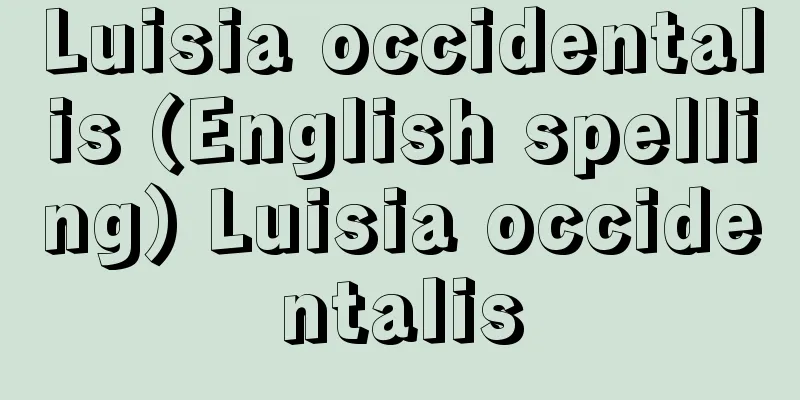Extraordinary Education Conference - Rinjikyoikukaigi

|
Established on September 21, 1917 (Taisho 6), this is an investigative and deliberative body directly under the Cabinet to investigate and deliberate important matters related to education. It was established as a direct response to the educational competition between Western countries during World War I, with the aim of improving Japan's international status after the war and promoting the essence of the national polity in terms of social and ideological issues both at home and abroad. Under Prime Minister Masatake Terauchi, it consisted of President Tosuke Hirata, Vice President Yuzuru Kubota, 36 committee members, and 4 secretaries. It was the first education conference of its kind to be free from the supervision of the Minister of Education, and its members included not only bureaucrats from the relevant ministries and agencies, but also influential figures from the Privy Council and the House of Peers, preparing to carry out educational reform. The conference was consulted on nine topics: elementary education, higher general education, university education and specialized education, normal education, school inspection system, women's education, vocational education, general education, and the degree system. After submitting its report on these issues, the Temporary Education Council was abolished on May 23, 1919, and a Provisional Education Committee was established to discuss detailed plans for implementation. All of the overall improvements to the education system implemented since 1919 have been based on the recommendations of the Temporary Education Council. Later, the Education Council (1921) and the Cultural Affairs Council (1924) were established as deliberative bodies for educational policy. [Hiroki Otsuki] "A Study of the Temporary Education Conference by Kaigo Muneomi (1960, University of Tokyo Press)" Source: Shogakukan Encyclopedia Nipponica About Encyclopedia Nipponica Information | Legend |
|
1917年(大正6)9月21日に設置された内閣直属の教育に関する重要事項の調査審議機関。第一次世界大戦下における欧米諸国の教育競争を直接の契機とし、大戦後における日本の国際的地位の向上と、国内外における社会・思想問題に対して、国体の精華の宣揚を期するために設置された。寺内正毅(まさたけ)首相のもと、総裁平田東助(とうすけ)、副総裁久保田譲と、36名の委員、4名の幹事からなる。この種の教育会議として初めて文部大臣の監督下を離れ、委員には関係各省庁の官僚のみならず、枢密院、貴族院などの実力者を選び、学制改革断行の態勢を整えた。会議に対する諮詢(しじゅん)は、小学教育、高等普通教育、大学教育および専門教育、師範教育、視学制度、女子教育、実業教育、通俗教育、学位制度の9項目であった。これらに関する答申を終えて19年5月23日廃止され、実行についての細案を議するために臨時教育委員会が設置された。19年以降実施された教育制度の全般的改善は、すべて臨時教育会議の答申に基づいている。なお、教育方針の審議機関としては、のちに教育評議会(1921)、文政審議会(1924)が設置されている。 [大槻宏樹] 『海後宗臣著『臨時教育会議の研究』(1960・東京大学出版会)』 出典 小学館 日本大百科全書(ニッポニカ)日本大百科全書(ニッポニカ)について 情報 | 凡例 |
<<: Temporary Interest Rate Adjustment Act
>>: Provisional Foreign Relations Investigation Committee - Rinji Gaikou Chosai Iinkai
Recommend
aircraft turbulence
…Nowadays, flight plans for domestic flights with...
fortune teller - fortune teller
A person who specializes in divination using coun...
gravity dam
...We will discuss these and fill dams in a littl...
index of warmth
...There are also various other dryness indices t...
Luther's Greater and Lesser Catechism - Luther's Greater and Lesser Catechism
A book written in 1529 by the German religious ref...
Owen Stanley Range
A steep mountain range that runs from northwest to...
Jelenia Góra
Located in southwest Poland, 100 km west-southwest...
Different phase boundary - Different phase boundary
…Solid materials such as metals and ceramics are ...
"Gimon Reading Journal" - Gimon Reading Journal
…He inherited the method of seeking truth from Wa...
Puerto Montt (English spelling)
The capital of the 10th region in south-central Ch...
Sermon on the Song of Songs
…The basis of practical mystical theology is alre...
Vila (mythology) (English spelling) Vila
…The thunder god Perun occupied the highest posit...
Scalpel
…It is mainly used for surgical incisions. The wo...
Valeriana flaccidissima (English spelling) Valerianaflaccidissima
…[Mr. Makoto Fukuoka] [Mr. Aya Nitta]. … *Some of...
Auxiliary Education Section - Fǔ jiào biān (English)
Written by the founder of the Yunmen sect of China...









